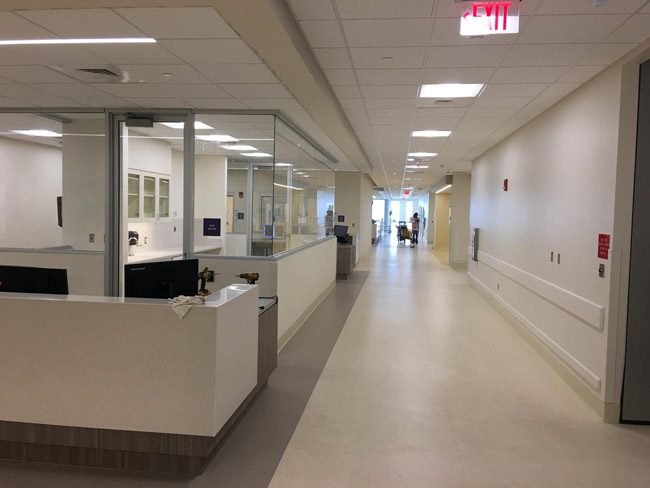
The Florida Supreme Court on Thursday ruled that a law limiting pain-and-suffering damages in medical malpractice cases is unconstitutional, rejecting a controversial change that the Legislature and then-Gov. Jeb Bush approved in 2003.
Justices were sharply divided, with the four-member majority finding that the caps on “non-economic” damages violated equal-protection rights. Also, the majority disputed that a malpractice insurance “crisis” exists — a justification that lawmakers used in approving the limits.
“We conclude that the caps on noneconomic damages … arbitrarily reduce damage awards for plaintiffs who suffer the most drastic injuries,” said the majority opinion shared by Chief Justice Jorge Labarga and justices Barbara Pariente, R. Fred Lewis and Peggy Quince. “We further conclude that because there is no evidence of a continuing medical malpractice insurance crisis justifying the arbitrary and invidious discrimination between medical malpractice victims, there is no rational relationship between the personal injury noneconomic damage caps … and alleviating this purported crisis. Therefore, we hold that the caps on personal injury noneconomic damages … violate the Equal Protection Clause of the Florida Constitution.”
But Justice Ricky Polston, in a blistering dissent joined by justices Charles Canady and Alan Lawson, argued that the majority was overstepping its role.
“The majority just discards and ignores all of the Legislature’s work and factfinding,” Polston wrote. “But, under our constitutional system, it is the Legislature, not this (Supreme) Court, that is entitled to make laws as a matter of policy based upon the facts it finds. It is the Legislature’s task to decide whether a medical malpractice crisis exists, whether a medical malpractice crisis has abated, and whether the Florida statutes should be amended accordingly. For a majority of this (Supreme) Court to decide that a crisis no longer exists, if it ever existed, so it can essentially change a statute and policy it dislikes, improperly interjects the judiciary into a legislative function.”
The ruling, which stemmed from a Broward County case, dealt with malpractice lawsuits that allege personal injuries. It was effectively an extension of a 2014 Supreme Court ruling that found caps unconstitutional in wrongful-death malpractice cases.
Lawmakers and Bush spent months debating caps and other changes in the malpractice system in 2003 amid what doctors described as a crisis of high insurance premiums. Plaintiffs’ attorneys vehemently opposed the damage limits, which they said would hurt injured patients.
Bush ultimately signed a law that capped damages at different amounts, depending on factors such as the numbers of claimants in lawsuits and the types of defendants.
The Broward County case decided Thursday by the Supreme Court began after dental assistant Susan Kalitan went into surgery in 2007 for carpal-tunnel syndrome and ended up with a perforated esophagus because of tubes inserted into her mouth and esophagus during the anesthesia process.
Kalitan filed a lawsuit in 2008 against the North Broward Hospital District and other defendants. A jury awarded $4 million in non-economic damages, but the amount was reduced by about $2 million because of the caps in the 2003 law.
The 4th District Court of Appeal ruled that the damage caps were unconstitutional, pointing to the Supreme Court’s 2014 decision in the wrongful-death case. That case involved a woman who died after giving birth at a Northwest Florida hospital.
The Supreme Court majority Thursday upheld the appeals court’s ruling, finding in part that the 2003 law violates equal-protection rights “because the arbitrary reduction of compensation without regard to the severity of the injury does not bear a rational relationship to the Legislature’s stated interest in addressing the medical malpractice crisis.”
But in his dissent, Polston focused on what is known as a “rational basis test.”
“Importantly, under the proper rational basis test, it is immaterial that the majority of this (Supreme) Court disagrees with the Legislature’s evidence regarding whether there was (or currently is) a medical malpractice crisis in Florida,” Polston wrote. “It is also immaterial that a majority of this (Supreme) Court questions whether the Legislature’s policy choice of enacting a cap on noneconomic damages has resulted in insurance companies passing along savings to their physician customers.”
–Jim Saunders, News Service of Florida
![]()
North Broward Hospital District v. Susan Kalitan (2017)
Click to access medical-malpractice-florida-supreme-court.pdf




























Layla says
And this is why the cost of medical care in this country is through the roof and nearly completely unaffordable.
Katie Semore says
@Layla, you statement is 100% incorrect.
http://www.hopkinsmedicine.org/news/media/releases/catastrophic_malpractice_payouts_add_little_to_health_cares_rising_costs
What would you consider a fair settlement if you went into a hospital to have your appendix removed and the surgeon got you confused with another patient scheduled for a leg amputation and you woke up minus your right leg and an hour later your appendix ruptures. Would $15k be a fair compensation?